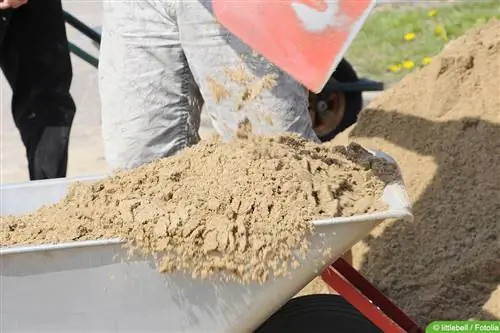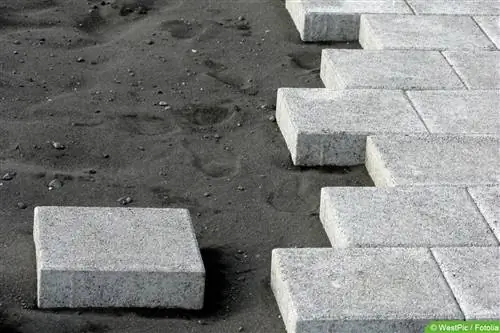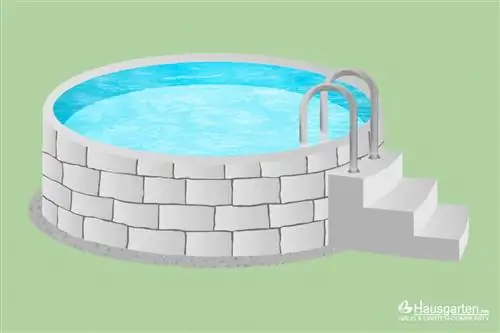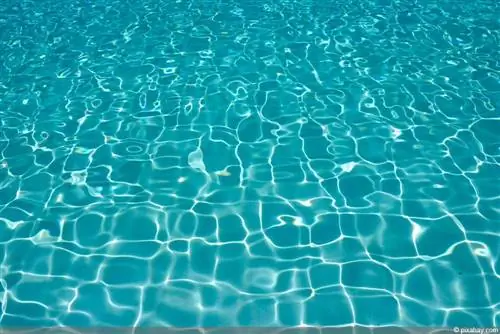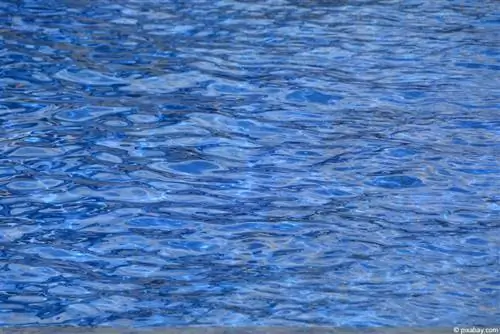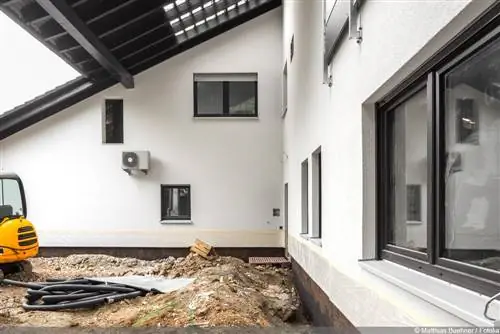- Author admin [email protected].
- Public 2023-12-17 03:39.
- Last modified 2025-01-24 12:45.
Using sand as a pool base or substrate is recommended by many places. But what are the advantages and potential disadvantages? These and other questions are answered comprehensively in our guide.
Benefits of quartz sand
Using sand in the base of a pool has several advantages, which is why the material is often used. The plus points are:
- easy compensation of uneven areas
- suitable for larger areas
- low cost
- variable stake
- little effort when spreading
Disadvantages of sand
The biggest potential disadvantage of quartz sand for the pool base is that the pool can slip on it and the quartz sand can spread. This can cause unevenness again. The only decisive factor in preventing this problem is the correct procedure when spreading the sand.
Creating a pool base made of quartz sand
Using a layer of sand as a base for the swimming pool is possible in just a few steps. Two different variants are possible. The easiest option is to just use sand for leveling.
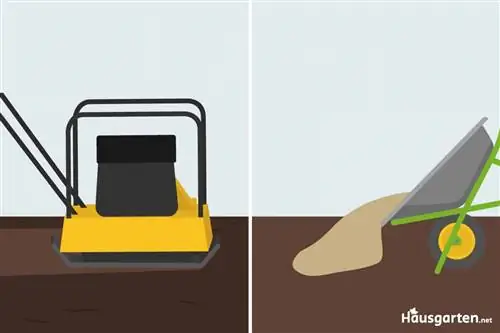
Bigger holes
These will be filled up first. Coarse gravel or gravel can be used for this. It is also possible to adjust the unevenness with earth.
Removing
Just like holes or hollows, foreign bodies and other unevenness such as stones, roots and hills must also be removed. Raised areas must be removed and adjusted.
Condense
In order to create a level and solid surface, the soil should be compacted. This can also reveal whether, for example, foreign bodies or stones have been overlooked. Because these are not only harmful to the bottom of the pool, but can also cause pain when standing in it.
Control
Before the quartz sand is applied, the area should be completely inspected. A height difference of one percent to a maximum of three percent is ideal. This means that a height difference of one to three centimeters should not be exceeded over a meter of length. Otherwise, the pool will later be crooked and may overflow or be damaged.
Spreading sand
As soon as the preparations have been completed, the quartz sand can be applied. This compensates for any small unevenness that may still be present and serves as a buffer between the subsurface and the bottom of the pool. However, before setting up the swimming pool, it is important to level and smooth the sand. A vibrating plate or flat vibrator can be used for this. However, smoothing can also be done with a board.
Tip:
Laying a weed fleece under the sand prevents roots and plants from growing through. This can also prevent damage to the swimming pool.
Dig the foundation
The second way to make a substructure out of sand is to first dig a foundation. Although the effort is initially greater, this is also the more stable and long-lasting variant. In the medium and long term, this actually reduces the amount of work required.
Tools & Materials
- Flat vibrator or vibratory plate
- gravel
- Mini excavator
- Ptakes
- Quartz sand
- string
- gravel
- Spade
- Spirit level
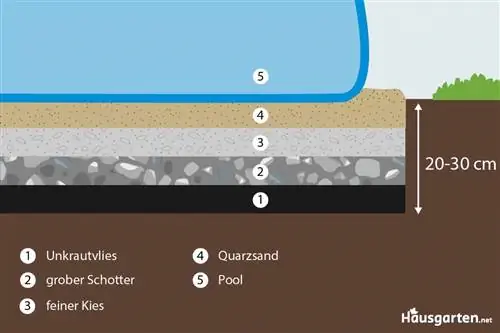
Instructions
1. Staking
After the outline of the pool has been measured, the perimeter is marked out. The stakes and the cord are used here. This demarcation serves as a guide for the subsequent excavation of the earth.
2. Excavate
Depending on the size of the area, a spade may be sufficient or a mini excavator may be a better choice. The pit should be 20 to 30 centimeters deep. The length of a spade can be used as a guide.
3. Condense
In order to create a stable surface and level the ground, flat vibrators or vibrating plates should be used.
4. Control
Using a spirit level you can quickly and easily check whether the area has been prepared accordingly or whether some areas still need to be improved and filled or removed.
5. Weed fleece
If the surface is firm and level, weed fleece can be laid out. This prevents roots or unwanted growths from breaking through and damaging the pool.
6. Refill
The first quarter of the filling should consist of coarse gravel. Another quarter is made up of finer gravel. These layers are also compacted after filling.
7. Add sand
Quartz sand is used to fill the pit, which should also only be a quarter of the depth of the pit. After compacting again, the pool can be set up.
8. Adjust margins
Once the pool has been constructed, the space between the bottom edges of the pool and the foundation should also be filled with sand. This serves as a buffer, which can prove to be extremely practical when moving in the water. Another advantage of this variant is that the swimming pool receives additional stability.
Note:
It's easy to rent a plate vibrator or flat vibrator from many hardware stores. For larger areas, we also recommend renting a mini excavator.
When can quartz sand be used as a substrate?
Quartz sand in conjunction with a foundation is always suitable as a base for a pool if it is:
- is an above-ground model
- there is no level surface
- a gradient needs to be compensated
- the pool is very big
The selection of quartz sand, however, is independent of the decision for installation. Even with an in-ground swimming pool, the material in the substructure can be a very important component. This applies even if the substructure of the pool has been concreted.
So a layer of sand is suitable in every case, from a small paddling pool for the little ones to a large pool for the whole family. If it is a model with a plastic or metal frame, just a few centimeters are enough to provide a stabilizing foundation. This makes both setting up and dismantling the pool easier and still offers good stability.
In addition, the foundation prevents the ground from shifting. These are crucial advantages, especially for children and when used by several people.
Tip:
For very small, light pools, a depth of 20 centimeters is sufficient and there is no need for gravel and gravel. A filled layer of quartz sand then acts as a buffer under the floor and can also ensure distance and safety at the edge of the pool.

